22 November 2013
In response to great demand, we have decided to publish on our site the long and extraordinary interviews that appeared in the print magazine from 2009 to 2011. Forty gripping conversations with the protagonists of contemporary art, design and architecture. Once a week, an appointment not to be missed. A real treat. Today it’s Lara Favaretto’s turn.
Klat #02, spring 2010.
I have the feeling that many important parts of my conversation with Lara Favaretto, in the text below, have been left out. The interview took place in phases, with continuous modifications, revisions, erasures, rewrites. I had the vivid sensation of finding myself inside a process of gestation of a work, but without the work. Now the interview is done, but the reflections made when the recorder was off, between one question and the next, have been lost. They remain closed up there, hermetically sealed in her work. The artist mentions one in particular, which helps me to visualize my feeling of loss, Lost & Found, a series of suitcases she fills with objects and then closes with a lock. She did this in 1997, and then threw away the key. Problematic, profound and acute, Lara Favaretto doesn’t tolerate compromises in her work. She never chooses the easiest way to capture the unexpected, the unpredictable, at times the impossible. We talked a lot about failure, not as defeat but as a process that reveals the aesthetic fetish that lurks behind the artwork: an obscure object, simultaneously sanctified and hidden. She did laugh now and then, but not as often as I had imagined, before starting our conversation. One last question has been removed from the text, as it remained without an answer. Will laughter bury us? Which is a quote from one of her works, E una risata vi seppellirà (Omaggio a Gino De Dominicis), from 2005. Lara preferred to end our conversation by talking about dignity, asking me: «Why, do you think we should talk about something else?».
You have almost ten years of work behind you now. From the early works, like Matrice#1/#2/#3, Contorni or Curva, all in 1997, to the large installation Momentary Monument (Swamp) at the latest Venice Biennial.
Ten years and more, probably to ask myself the same things. In 1995, in London, I spent lots of time throwing a yellow eraser at a white wall: a few hours a day, filming it all. I kept only ten minutes of that footage, without editing. I remember that I was in a rotten mood in that period, more than now, also because there was always too much and it always seemed like just a little.
What was the title of that work?
Structure. It’s my first work and it resembles many others that came later, like Unità strutturale, in 1997, an idea based on the construction of a load-bearing wall with mobile parts. But I’m also thinking of the small architectural models designed to be mental spaces, almost “pocket-size”, that reflected the desire to reduce reality to the bare basics. I’m thinking of the photograph of a white space, where the objects can be recognized only by their shadows. All works conceived by subtraction. Una vale l’altra (One’s as good as another), in 1999, is the title I gave to a series of photographs taken at the rehearsals of a chorus, during their exercises. Every shot was good.
Were you already finding the working method you have conserved, even today?
I believe method is something you set at the beginning and then you let it evolve, naturally. Over time, I have learned to record and file away raw images and perceptions, in an automatic way, to read details in a state of immobility, with a spellbound, imperturbable gaze.
What do you mean, exactly, by a spellbound gaze?
It’s not the glassy eye, but a type of concentration, a detachment from things. It is a condition that shortens time, a state of absence that can be interrupted in the blink of an eye. A bit like what happens in one second and a half in Too Fast, 2006: a video made by speeding up, as fast as is technically possible, another looped video, La terra è troppo grande, shown at the Venice Biennial in 2005.
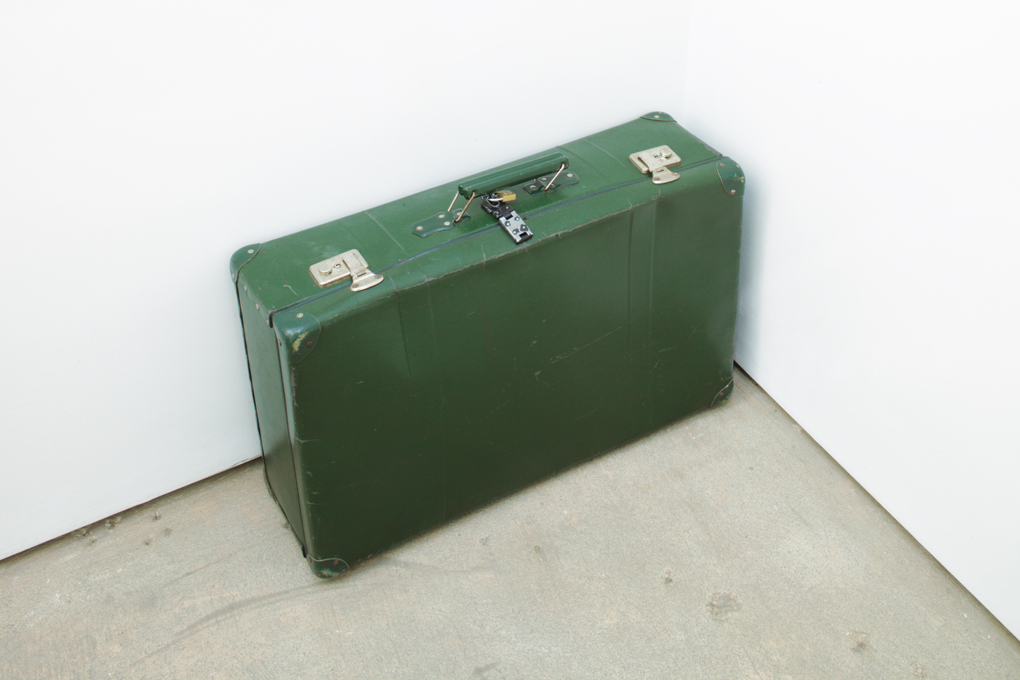
Lara Favaretto, Lost & Found, 2008. Courtesy: Lara Favaretto, Galleria Franco Noero, Torino.
Concentration, detachment, absence. How does the work take form, how does it come into being?
A state of concentration is a condition of investigation, and it permits you to visualize a project, not to make it. I laugh when I think back on the advice a friend gave me during the preparation of Momentary Monument (Swamp), at the latest Venice Biennial. She said I should spend some time in a wellness center, getting mud treatments, combining business and pleasure. She was kidding, of course, but the miracle often happens when you’re utterly distracted. The fulfillment of a work is a process that alternates anxiety, linear developments and changes of direction. At the end of the process, when you have reached a conclusion, the various discarded possibilities come back to mind. And everything starts again with a new project, in pursuit of old and new impressions, in a new work space, with new helpers. I share the whole project with my team, often rethinking my initial idea. I don’t have a studio or a place for trying things out and making them. I just have my archives.
How is this process inserted in the preparation for a show?
There isn’t a work made for a show, but an old project that gets reconsidered for a specific space. Thinking up a project means giving form to an apparition, and often everything arises from a suggestion conserved in the archives, that is transformed into a stop-action, a frame of an imaginary film. The completion of a work does not depend on time, it is naturally linked to a space, a context. The space and the work, in many cases, are hard to distinguish from each other. For some time now I have wondered about how to make a show without making it. But that wasn’t one of your questions…
How can you make a show without making it?
This is one of the four questions I wrote on a wall for the exhibition in 2008: Why another Show? Why another Space? Why another Magazine? Why another Work? Maybe an unmade show is what stages a space of perplexity, but I don’t know… Momentary Monument, the installation I did in Trent in 2009, was partially this, too. If I knew how to make a show without making it, I would already have produced it, years ago: it’s one of those things I would have liked to do since the start of my career. I remember that when I lived in Milan I began to work on this, with my concierge.
Is it possible for an artist to talk about a work without producing it?
A work always has to be produced, even if this means subtracting, removing. Completing a work, for me, is like squelching a possibility, invalidating a presence: a bit like when no one notices you are there and you are actually there. I prefer to talk about the motives that make an image disappear, about how the image is vandalized. I like to shift from perfection to the fall, to push the work to its tipping point, its limit, to endanger it, to the point of making it yield, jam, collapse. An irregularity is amplified until it generates a state of crisis, of impotence. Like a passage from hypermodernity to a primitive state.
When did you realize that your work was moving in this direction? Was there one work that indicated this path to you?
Your question isn’t clear to me. I do work that permits me to design a single large image, which is gradually constructed, like a sort of atlas. Everything has to interlock and coincide, but above all nothing should be repeated. Take the performance done in 1998, Doing, and the Momentary Monument made in Bergamo last year: they have a similar process, the same attitude. While the first involved the pulverizing of three blocks of marble, the second was the construction, in Indian granite, of a public money box that was then destroyed in February 2010.
Are there other works of yours that reach the state of impotence you mentioned?
This aspect is found in most of my works. I construct a paradox that combines cynicism, as a form of weakness, with compassion, as an emotional investigation. The fate of my works makes them like guinea-pigs. There are two works in which this relationship is most evident: È così se m’interessa and Cominciò ch’era finita, both in 2006. In the first a hemp rope with one part covered with black leather was hung from the ceiling and shaken by a mechanical arm with a motor. The second was the reconstruction of a merry-go-round disguised as military equipment: the disguise was done with 32 German military tents, sewn together. These are both menacing devices that rotate and hit the surfaces around them, getting marred, deteriorating, ripping, and this wear and tear reveals the hidden aesthetic fetish, slowly, over time.
In Plotone (2005/2008) I can also see this tension between opposites: an array of unarmed but rigidly undaunted soldiers who seem to simply await their demise, from exhaustion. Simultaneously pathetic and disturbing.
When I was invited to install Plotone I asked them to rent nitrogen canisters, specifying only the measurements. The protagonist is a platoon, a “solid form” that seems to state its defeat and reveals its helplessness if it is attacked. It is a formation of canisters, made using functional containers that require no care. Their deterioration is spontaneous, not induced. A squad of immobile soldiers, in obligatory stillness. A stillness that is interrupted by the sound of the pressure of the air that passes through the individual whistles, in a random rhythm set with timers and valves.

Lara Favaretto, Momentary Monument (Swamp), 2009. Making Worlds/Fare Mondi, 53.Biennale di Venezia. Courtesy: Lara Favaretto, Galleria Franco Noero, Torino.
Does it make you angry when certain works, like I poveri sono matti (2005/2008) or Confetti Canyon (2005), for example, are considered fun and humorous?
I like it if a work lends itself to various interpretations. Some people think Plotone is a funny work, I would add funny game. When they say that something is cheerful, or fun, I prefer to respond with something gloomy. It’s awkward, like when people ask me if I’m happy. The two works you mention are both performances, with one difference: I poveri sono matti is a project that vanishes after a few days, while Confetti Canyon lasts only a few hours. The caravan and the cannon, protagonists of the two apparitions, vanish and go back into storage: a gypsy camp, for the former, and a museum for the latter. This is also what happened in Treat or Trick, a work I did after my trip to Cuba, where I shot a film with Sandra Milo during the Carnival of Santiago. It is a performance designed as a parade composed of fourteen masks in papier-mâché, worn and paraded through the city, without any previous announcement of the event. The parade is often misunderstood. At the end of the performance, the masks are deposited in the museum space, waiting for another trip through the streets, or a last appearance before they are finally burned. Because, as always, when a party is over everything has to start over, from the beginning.
Another work, less well known, began when you were doing Treat or Trick: Bulk, in 2002. Two works that are very interconnected but very different.
I can tell you that I still have trouble talking about Bulk, not so much where the formal aspect is concerned, but regarding the process. Bulk is an installation composed of 28 anonymous plaster forms, in pairs, held together by plastic packing belts. It is a work I made without realizing it: I saw the forms used to create the masks of Treat or Trick and the idea came to me. Bulk was constructed in two and a half months, inside a hangar, with the help of thirty male volunteers. The work consisted in making plaster casts starting with the original forms, modeled in actual size with clay. An intermediate, functional phase that made it possible to obtain a negative and to clone, at least two more times, the work Treat or Trick. The production, done without any attention to details, aesthetics or the choice of the material, happened using any piece of newspaper or wood that came to hand.
You mentioned making a film. What was that experience like, and what did it leave you with? In an earlier conversation you told me that your real passion is not art but cinema.
Cinema is an apparition, it’s an experience that keeps the imagination at a high level, how could I help but like it! I do film-watching marathons. I make every installation as if I were in a film, I conceive of it as the architecture of a vision. To get back to your question: I made a film in 2001 and I do not plan to do it again under those conditions. My decision to make a feature-length film came after I met Berardo Carboni. We immediately got into an intense discussion of sequences, almost a storyboard. Then a sort of screenplay took form, a light form that might remind you of Permanent Vacation by Jim Jarmusch. We imagined a story about the disappearance of an icon: Berardo thought about Alvaro Vitali, I thought of Giulio Andreotti, but in the end we decided on Sandra Milo! The story met with approval, though I often wondered if the producer knew anything about cinema or if he was just nuts. Berardo was just getting started, he had only made two shorts, and I had no on-set experience. It was really a case of full immersion. In a short time, we wrote the treatment, talked things over with the producer, put together a troupe and shot the film. During the shooting our approach may have been awkward, amateurish, but I still felt comfortable because the film was organized, at least half of it, with a structure similar to that of my video Sollevarlo non vuol dire volarlo, in 1999, namely with plenty of improv. I forgot to tell you the title… Buco nell’acqua (laughter; the title means “fiasco”, ed.). It’s a long story. When the film was done, the editing was deemed unsuitable for television, by the prospective purchaser. So Buco nell’acqua was edited again, by an external editor, and then purchased by Mediatrade. Maybe some day they will show it, late at night, a few hours after the death of Sandra Milo, in a special…
Speaking of your videos, Sollevarlo non vuol dire volarlo and Shy as a Fox are considered flows of minimal stories, impressionist chronicles of everyday people. What story did you want to tell with these two works? What were you interested in revealing?
In Sollevarlo non vuol dire volarlo I involved a group of friends, with whom I was not acquainted, and organized them like a chorus. For them it was a hike in the hills, a Sunday morning outing… The people involved had to cooperate and find a way to raise a donkey, remembering the Italian saying “the donkey flies” (a trap for the gullible, ed.)… I just watched. It was like losing time, creating a hole in time. With Shy as a Fox, on the other hand, in 2000, I visited several Italian cities and recorded over seventy stories, trying to find the truth about the story of the dream of the fox. I edited just a few of them, trying to create a paradox between my question and the unpredictability of the answers. I met some extraordinary, at times disarming people.
Is there a connection between the choice of the fox, the symbol of slyness, and the fact that you work in a system, that of contemporary art, where having a strategy and being astute really count?
I don’t know how to do strategy with art, I’m not comfortable with that. It gives me the idea of something boring and distant. I’ve never thought about a problem in those terms. When I chose the fox I was not referring to a specific condition of the world of contemporary art, but to the human condition.
I wanted to see if you had an opinion about those who think artworks are just 50% of the success of an artist. The rest is public relations, good contacts.
Don’t make me become even more boring than before! What are you talking about? Percentages? There are too many unknown factors and it is better not to waste time on these things. It’s better to collect and discard, as I love to do, since 1997, accumulating suitcases. Once a year I seal one up after having filled it with things, I lock it and I throw away the key. It’s true! You want the title, Lost and Found, but I won’t tell you the year because I don’t know which one.
From your answer, I guess you have nothing more to say on that subject. Let’s get back to your work, which seems to be the only thing that really interests you.
That’s a lie! We can talk about anything, it would be more fun. You’re the one asking the questions! I don’t try to have good relations, I don’t know many people, so I can’t tell you much in the way of gossip. I never go out, though I do travel a lot. I rarely show my face.
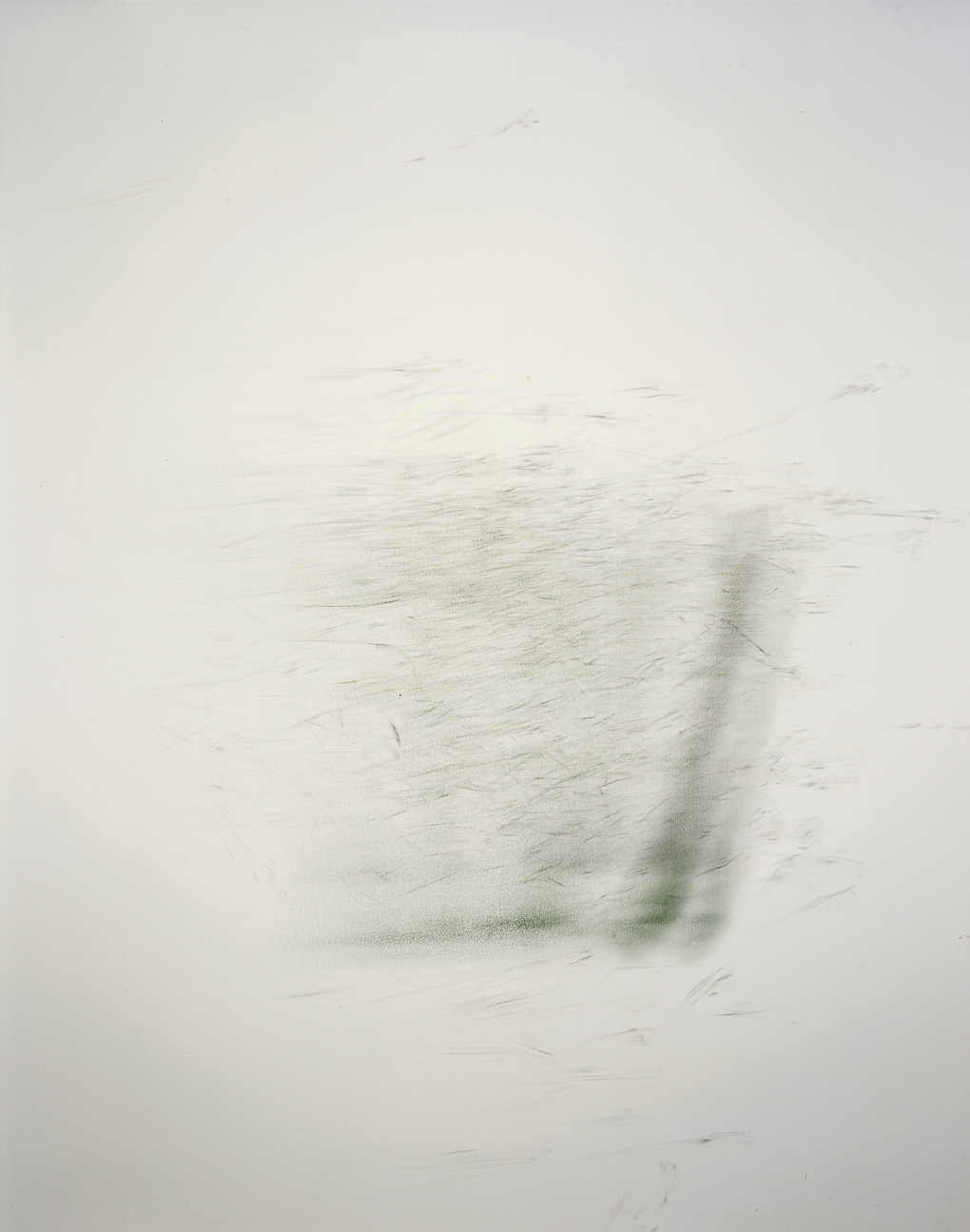
Lara Favaretto, È così se mi interessa, 2006. Collezione MAXXI, Roma. Photo: Paolo Pellion di Persano.
I’ve noticed how much you travel. To do this interview you had to plan our appointment one month in advance. I imagine your trips are for shows. I think I missed some steps, you were in London, Aspen, then Glasgow, where you opened your solo show in October at Tramway.
Indeed, I have a personal life that doesn’t need to be told: it doesn’t exist! I discovered that Glasgow is an extraordinary city. The solo show at Tramway, Absolutely no Donation, is my first show of paintings. You think I’m kidding. The entire installation was a tribute to Barnett Newman and was composed of 17 paintings I made in relation with three cubes of confetti, pressed by hand, waiting for their inevitable, spontaneous collapse. On the walls the paintings played with sizing and colors, movement and speed. Each single painting was composed of one or more carwash brushes, in different colors, that rotated to create an electrostatic surface generated by the friction of the plastic against the metal. The brushes polished the iron sheets to which they were attached and produced, on the sheets and the wall, an irregular silhouette of dust and colored fragments, created by their slow deterioration. This action transformed the brushes into automata that spun without any opposition or friction, because they were consumed, though only partially. The cubes were made with 150 kg of black confetti mixed, in different percentages, with colored confetti.
Barnett Newman wanted to make a tabula rasa of the tradition of painting, to start from scratch as if painting had never existed. That made sense in the 1940s, but isn’t this reference a bit shaky today?
Maybe it didn’t even make sense back in the 1940s, maybe every work should start from a tabula rasa. It’s everyone’s dream, not just that of artists. Who wouldn’t want to have the pleasure of doing a reset, taking it from the top? I mention Barnett Newman, but I could also cite Joseph Conrad, Jean Vigo and many others. Ignoring the past is a hypocritical pose. After all, we’ve already gotten past the obsession with the Postmodern, for years now.
I thought you mentioned him in relation to the fact that you consider Absolutely no Donation an exhibition of paintings. Why do you think of it in those terms?
Why else should I mention Newman? I’m not a painter, but my images are. Haven’t Luchino Visconti, Olivier Assayas, Friedrich Wilhelm Murnau and Alejandro González Iñárritu made paintings with their films? It might be intriguing to think about the question: how can an installation be viewed in pictorial terms?
How can an installation be viewed in pictorial terms?
In various ways. One example, besides Absolutely no Donation, might be the work I made at the Arsenale for the 53rd Venice Biennial. I know that many people did not see it, but maybe it was far away (laughter, ed.). The work I’m talking about is the above-mentioned Momentary Monument (Swamp), a swamp cut by a gilded blade, containing a buried secret: objects I have dedicated to all or some of the 23 deceased persons on whom the entire project is based. The world of the vanished is one of many temperaments, intriguing, endless. The vanished are also those who age with their ideas and thus protect their visions. In any case, this research is still in progress. In Momentary Monument (Swamp) there is no separation between the work and the space that contains it: this makes it pictorial.
Regarding Momentary Monument (Swamp), many people wondered if the objects were really buried there. It is a work that is full of reminders: the hypothetical buried objects that rot together with the imaginary figures of vanished celebrities. Why dedicate a swamp, or «no-man’s-land», as Tom Morton called it in an article (Frieze, issue #126, October 2009), to the writer Ambrose Bierce, the artist Bas Jan Ader, the wanderer Christopher Johnson McCandless and the chess master Bobby Fischer? Just to name a few.
Isn’t a work always a no-man’s-land? The swamp is primarily an idea and a sensation, more than an image. It is a state of things and I think it can be defined as a space that swallows things up without changing. It’s a sort of pit of insanity, a sunken cemetery. It shuns definitions and files away unknown documents, becoming a repository of wishes. What better place for someone who wants to return to being anonymous, to be left in peace?
The work you installed in Venice happened almost at the same time as two other Momentary Monument: a large moneybox placed in a square in Bergamo, and the work in Trent, Wall, where you built a wall of sandbags around a statue of Dante. Three works with three different developments and messages: disappearance and death in the first, altruism and solidarity in the second, defense and the space of complexity in Trent. Is there a connection among the three works? Explain the meaning you assign to Momentary Monument.
I talk about perplexity, not complexity. Impossible but real, to use words that are not mine. You make a work and then you destroy it: because it has to disappear, like everything. Why should things be different for an artwork? Everything else has to vanish. What extraordinary reflections would we make if there was an earthquake and a museum were to collapse, for example? The whole collection, assembled over time, would be lost. It would be sad, but it could happen. What would be the difference with respect to a temporary monument? Momentary Monument is the title of a series of projects that share a linguistic paradox. For the destruction of the large piece of Indian granite I worked with specialists to plan the breaking and the definitive destruction. For the wall of sandbags, on the other hand, the disposal happened by means of what I called an act of authorized vandalism. The swamp is something else again, it is the reclamation of the land, and it is crazy that at the end of the Venice Biennial the swamp stops being “art work” and starts being what it was before, though with one difference: that now it is fertile land…
Speaking of Trent… that installation caused much discussion, both during its construction and in the days after the opening. I was particularly struck by one of the many articles. The work was compared to the Tower of Babel, a collapse caused by linguistic distances. Art, then, as an incomprehensible language: art does not understand the people, and the people do not understand art. Did you imagine this work would be misunderstood?
The insertion of any alien reality in a public space is an operation that calls for suitable explanation, and should be communicated in the most appropriate way. I expected the misunderstanding and I was amused by the idea that a wall of burlap bags could also be seen as a set for a documentary on World War I, the life-size reconstruction of a board game with soldiers and tanks, a barrier to protect against an expected flood, or just a moment of restoration work on the statue of Dante. The Momentary Monument made for Trent is none of those things: it’s a trench. It is a refuge that desires compassion, clumsy but tenacious, a place in which to sum up and reorganize the state of necessities, perhaps making a more intimate, human sensibility come back to the surface. It is a wall without any aesthetic footholds, ugly and assailable, built to protect the place of perplexity and anonymity. It is the construction of an absent space, a figurative hole. It is an archaic, brutal form, and, after the collapse, it is also dramatic. It is a formless and irritating apparition, so it provokes distrust.
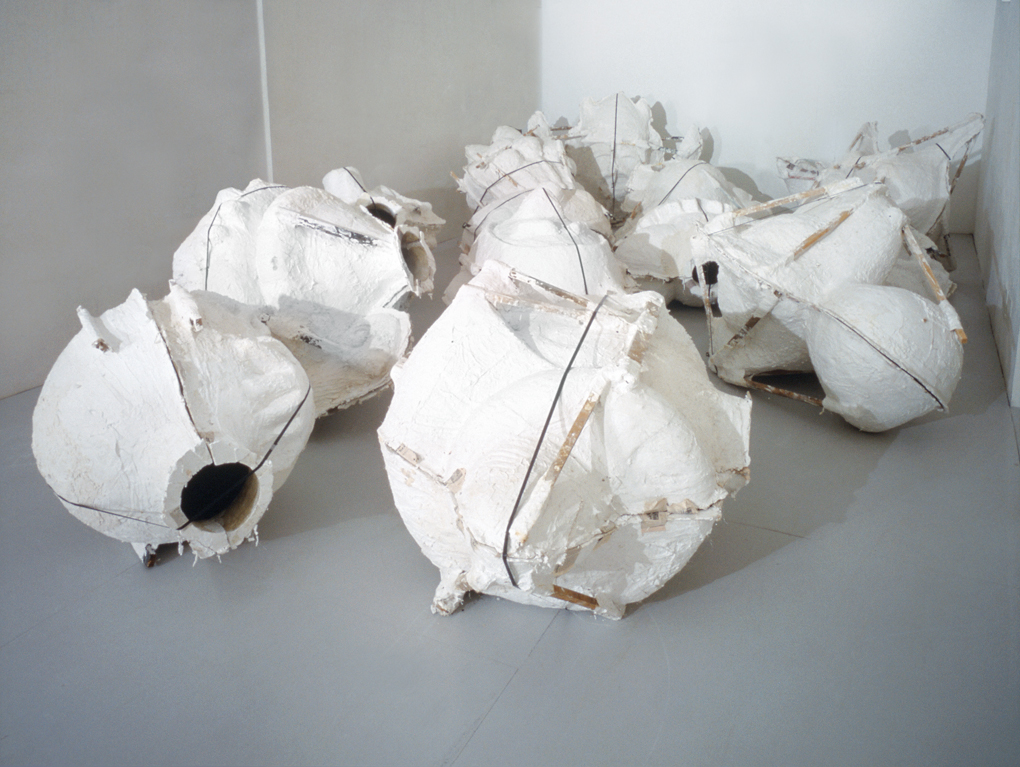
Lara Favaretto, Bulk, 2002. Courtesy: Lara Favaretto, Galleria Franco Noero, Torino. Photo: Ela Bialkowska.
There is one work, still in the project phase, whose story I would like you to tell: Project for a Utopia. A large balloon in the form of a donkey that crosses Europe, hosting politicians, opinion-makers and celebrities who discuss the concept of dignity. I have read that in this work you put the accent precisely on the word dignity as a minimum common denominator, fundamental for all the rights of man.
It is a project because it has not yet been implemented, but it is all ready. It was written in 2001, after having made Mondo alla rovescia. It will be a balloon in the form of a donkey with wings, that can be transformed into an eclectic combination of theater and activism. Project for a Utopia or Utopia Monumentale is an airborne platform that will host and interface different viewpoints on the theme of dignity. It will be a performance that can be repeated anywhere, with the objective of exploring the greatest number of variations on the theme. Maybe I should have proposed it before the elections, for the campaign of Obama. Of course not! Just kidding…
What do you want to demonstrate with this work? Is it one possible way to reveal how much we have lost touch with the sense of this word?
Yes! I put the accent on the word dignity. Why, do you think we should talk about something else?
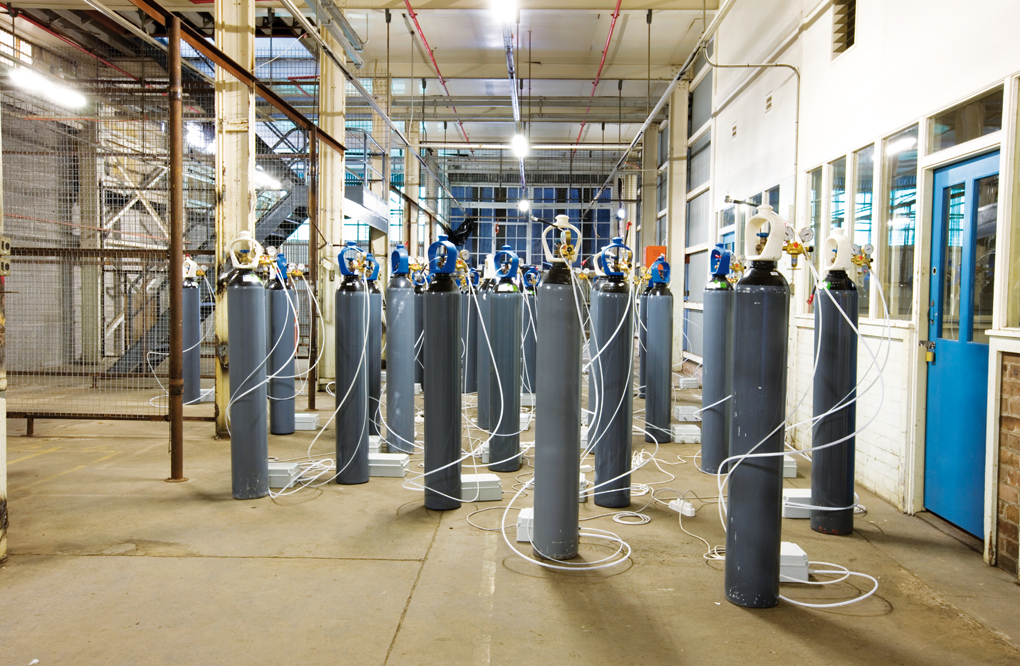
Lara Favaretto, Plotone, 2005-2008. Courtesy: Lara Favaretto, Galleria Franco Noero, Torino. Photo: Jenni Carter.
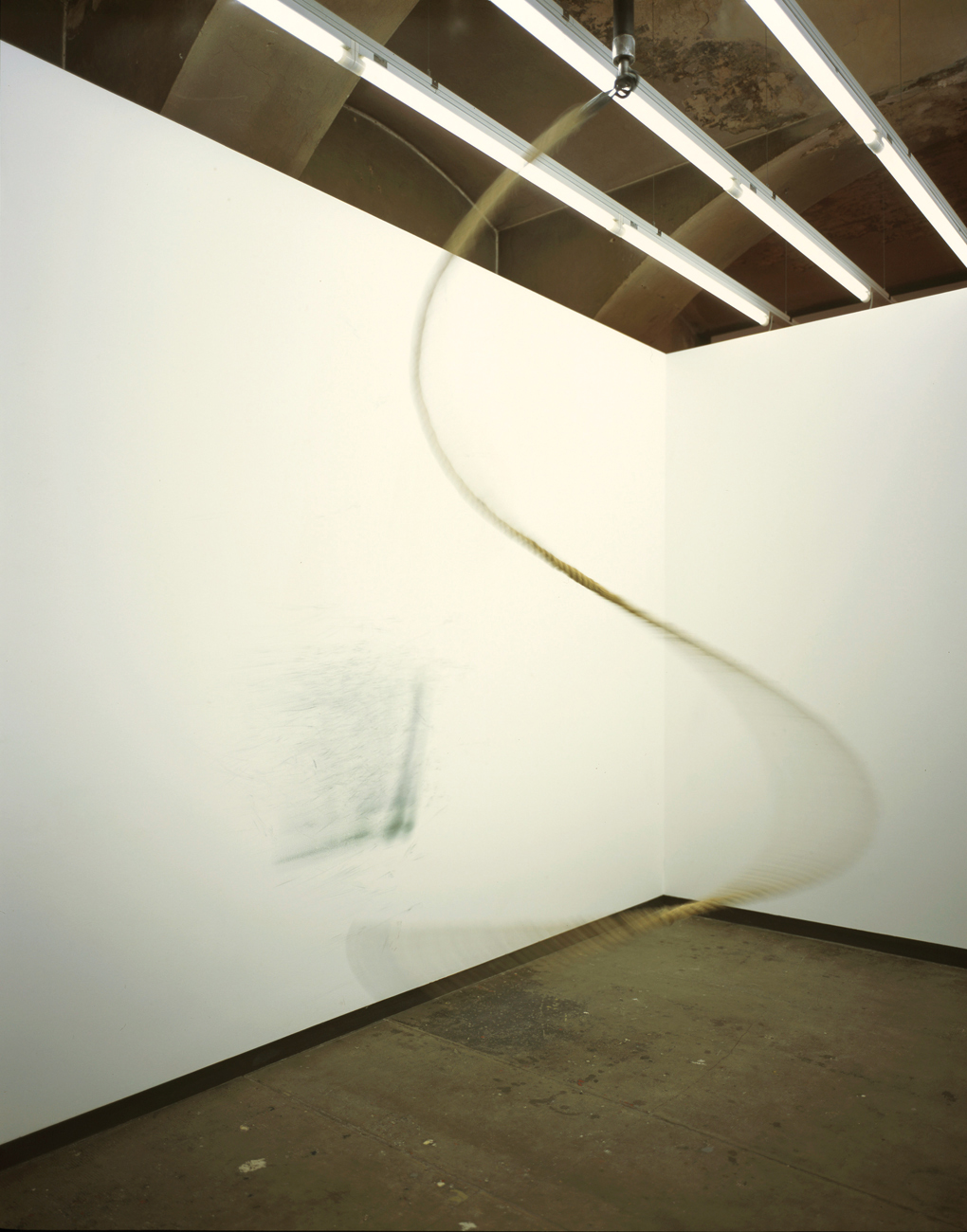
Lara Favaretto, È così se mi interessa, 2006. Collezione MAXXI, Roma. Photo: Paolo Pellion di Persano.
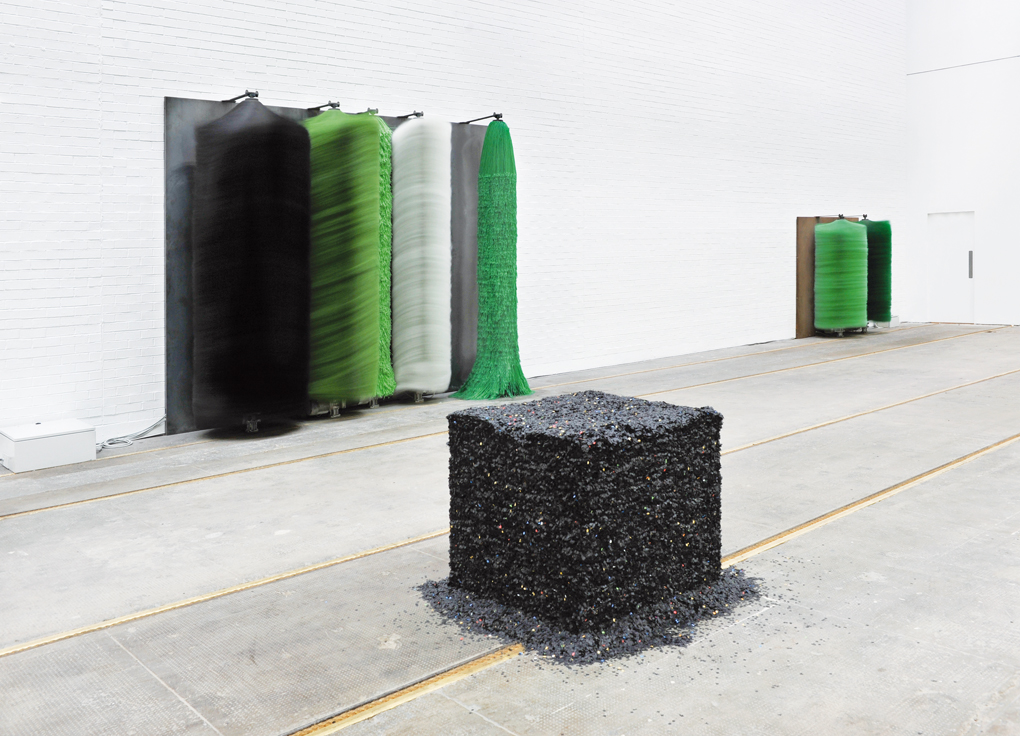
Lara Favaretto, Absolutely no Donation, 2009. Tramway, Glasgow. Courtesy: Lara Favaretto, Galleria Franco Noero, Torino.
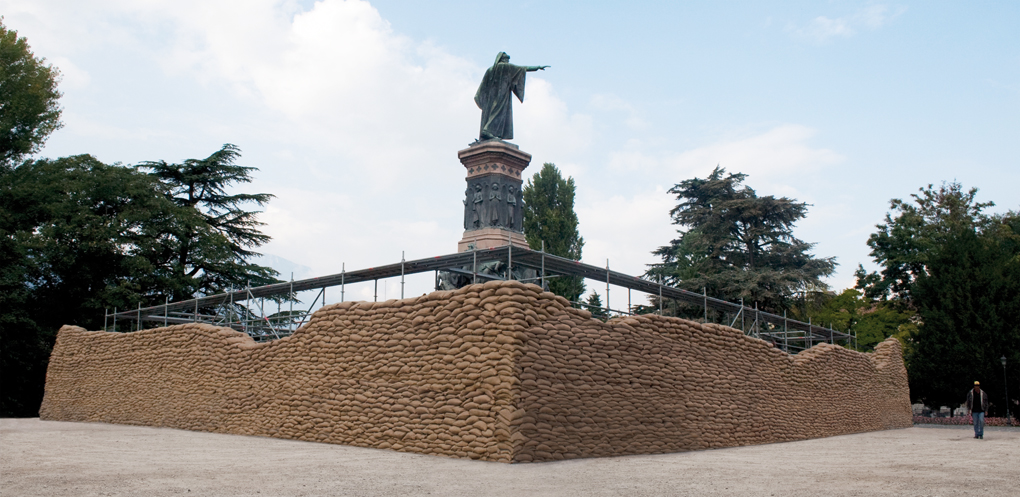
Lara Favaretto, Momentary Monument (Wall), 2009, Trento. Courtesy: Lara Favaretto, Galleria Franco Noero, Torino. Photo: Giulia Parri.